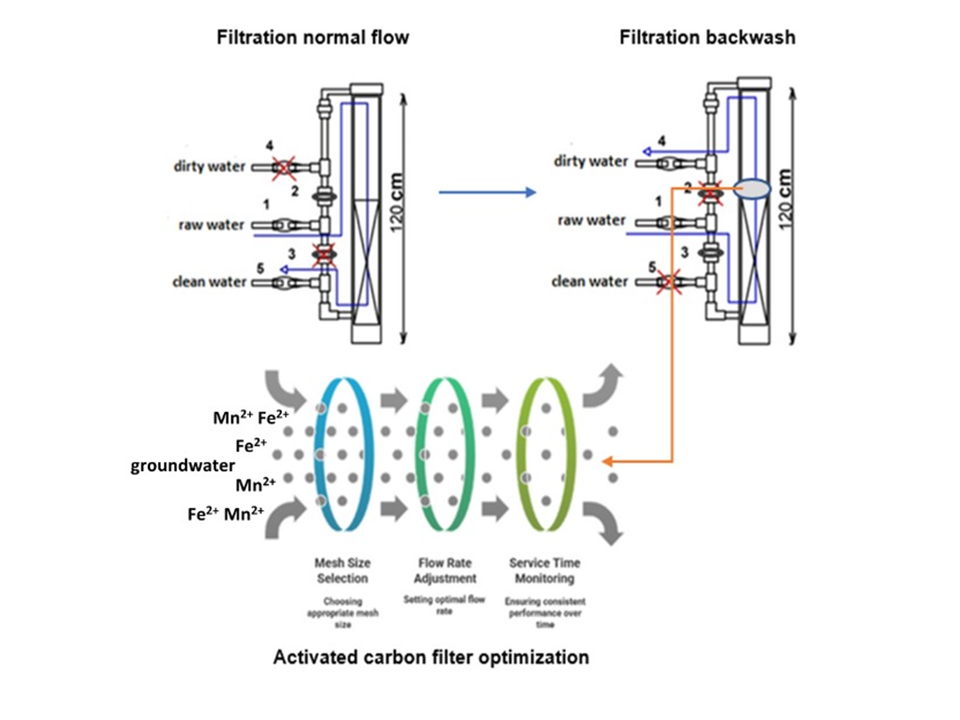Hydraulics and Dynamics of Backwash in Filtration with Activated Carbon to Reduce Iron and Manganese in Groundwater
DOI:
https://doi.org/10.55749/ss.v1i1.70Keywords:
Adsorption, Flow rate, Head loss, Reynolds number, Well water qualityAbstract
Well water used by the community often does not meet quality standards because it contains high levels of iron (Fe) and manganese (Mn). This study was intended to reduce Fe and Mn levels in well water by using filtration technique with activated charcoal media. The effect of hydraulics and backwash dynamics on the efficiency of filtration process was also investigated. The filtration apparatus was made of PVC pipe with the diameter of 4 inches and 120 cm height. The determination of optimum hydraulic conditions of filtration was carried out by varying the size of the activated carbon filter media (8-10, 12-14, and 16-18 mesh) and flow rate (1, 2, and 3 L/min) at the service time of 10 hours. The results showed that the size of filter media has significant effect on removal efficiency of Fe and Mn, with the most effective size was 16-18 mesh with the removal efficiency of 83.33% (Fe) and 93.33% (Mn). The highest head loss value in the filtration column was 0.15 cm, which occurred at the flow rate 3 L/min. Backwash should be performed after filtering process of 35 hours, 44 hours and 55 hours at the flow rate 1 L/min, 2 L/min, and 3 L/min repectively. The single filter design in this study reduced Fe and Mn concentration to meet clean water quality standards.

Downloads
Published
Issue
Section
License
Copyright (c) 2025 Sorption Studies

This work is licensed under a Creative Commons Attribution-ShareAlike 4.0 International License.






